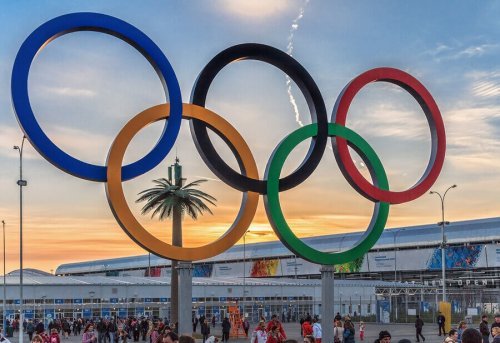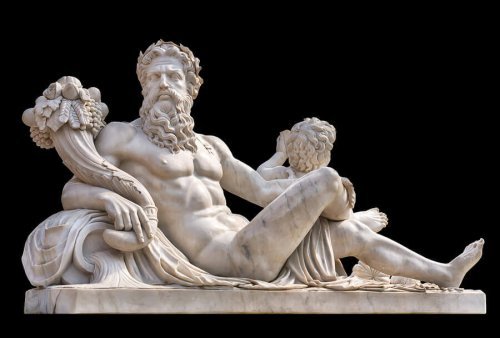The Ancient Olympic Games: Traditions

In Ancient Greece, athletes participated in competitive sports to honor their God, Zeus. The ancient Olympic Games were socially, religiously, and even mythologically important for the people in Greece during that time. The winners were considered to be in the “likeness and image” of the gods. Today, we’ll tell you a little more about the ancient version of what’s still a popular tradition today.
The ancient Olympic Games: the beginning
Before the Olympics, there were other kinds of competitions in Crete. We know about these thanks to remains of fresco paintings portraying boxers and bullfights.
Starting in the year 776 BC, the Olympic Games were held every four years (an olympiad) and during the celebration, the authorities declared a truce so that athletes from different cities could participate. The Games were held in the city of Olimpia in July and August.
Unlike the modern Olympics, there were fewer events in ancient times. Only men who spoke Greek could participate, and the location never changed. The organizers didn’t allow women, slaves, or foreigners to enter the games.
To prepare for the competition, twelve-year-old boys started training at a place called a “palestra” (a sort of arena). When they were aged 16, they began to practice track and field and other physical fitness tests in the forest. At the age of 20, they were in good enough shape to participate in the Olympic Games.
What kind of sports were there in the ancient Olympic Games?
Some of the ancient sports are still around today, others have been lost to antiquity. These were divided into what they called agons (agon is an ancient Greek term for conflict, struggle or a contest). Here are the sports that athletes participated in during the ancient Olympic Games:
1. Races
This was one of the athletic agons and it was the only category that had individual winners. The race distance was the length of a stadium (192 meters).
Later, they added another event, the diaulo, which involved running the length of the stadium and back. There were other, longer races as well, with athletes running 7, 12, and 24 lengths of the stadium. The most difficult was the race that involved wearing armor. In all of the other races, the athletes were naked.

2. Discus
This was part of the pentathlon and the athletic agons. The competitors had to throw stone discs (later bronze discs) of different sizes and weights depending on the age and category of the competitors.
3. Long jump
This is the only sport from the ancient Olympic Games that athletes still do today. The competitors had to get a running start, and then jump across a pit of soil. To improve their jump length, athletes used stone or bronze weights in each hand.
4. Javelin throw
This was also part of the pentathlon, and gave points for distance, not for aim. The javelin was the same height as the athlete and the diameter of a finger. It didn’t have a point, unlike the ones we see today.
5. Wrestling
The goal here was to knock down the opponent using different holds or locks. Holds of the arms, torso, and neck were permitted, but athletes could not grab each other’s legs.
6. Pankration, a bloody sport from the ancient Olympic Games
You might think of this as the predecessor to mixed martial arts. Contestants could defeat their opponent with any kind of move, including dislocation. Combat sometimes ended with the death of one of the athletes.
7. Pugilato
This is similar to modern boxing and was introduced to the ancient Olympic Games in the year 688 BC. The rules only allowed competitors to strike with their fists. At first, they played with bare fists, and later with gloves.
8. Chariot races
This was one of the equestrian events and it took place in the hippodrome. The chariot had two wheels and was driven by a standing charioteer who held a whip in one hand and the reigns in the other. The chariot could be pulled by two or four horses.
There were other kinds of races as well, including the kalpe, which involved the driver getting down from the chariot and finishing the last lap on foot.

9. Pentathlon, one of the attractions fo the ancient Olympic Games
The most beautiful and athletic youths competed in the five events: the long jump, the discus throw, the javelin throw, wrestling, and racing. This was undoubtedly the most demanding competition in the games.
In conclusion, the ancient Olympic Games were held until 393 AD, 12 centuries after they began. The end came when Christianity was adopted as the official religion, and these games were declared Pagan activities. Later, in 1896, the games were back, in the same format we know and love today.
In Ancient Greece, athletes participated in competitive sports to honor their God, Zeus. The ancient Olympic Games were socially, religiously, and even mythologically important for the people in Greece during that time. The winners were considered to be in the “likeness and image” of the gods. Today, we’ll tell you a little more about the ancient version of what’s still a popular tradition today.
The ancient Olympic Games: the beginning
Before the Olympics, there were other kinds of competitions in Crete. We know about these thanks to remains of fresco paintings portraying boxers and bullfights.
Starting in the year 776 BC, the Olympic Games were held every four years (an olympiad) and during the celebration, the authorities declared a truce so that athletes from different cities could participate. The Games were held in the city of Olimpia in July and August.
Unlike the modern Olympics, there were fewer events in ancient times. Only men who spoke Greek could participate, and the location never changed. The organizers didn’t allow women, slaves, or foreigners to enter the games.
To prepare for the competition, twelve-year-old boys started training at a place called a “palestra” (a sort of arena). When they were aged 16, they began to practice track and field and other physical fitness tests in the forest. At the age of 20, they were in good enough shape to participate in the Olympic Games.
What kind of sports were there in the ancient Olympic Games?
Some of the ancient sports are still around today, others have been lost to antiquity. These were divided into what they called agons (agon is an ancient Greek term for conflict, struggle or a contest). Here are the sports that athletes participated in during the ancient Olympic Games:
1. Races
This was one of the athletic agons and it was the only category that had individual winners. The race distance was the length of a stadium (192 meters).
Later, they added another event, the diaulo, which involved running the length of the stadium and back. There were other, longer races as well, with athletes running 7, 12, and 24 lengths of the stadium. The most difficult was the race that involved wearing armor. In all of the other races, the athletes were naked.

2. Discus
This was part of the pentathlon and the athletic agons. The competitors had to throw stone discs (later bronze discs) of different sizes and weights depending on the age and category of the competitors.
3. Long jump
This is the only sport from the ancient Olympic Games that athletes still do today. The competitors had to get a running start, and then jump across a pit of soil. To improve their jump length, athletes used stone or bronze weights in each hand.
4. Javelin throw
This was also part of the pentathlon, and gave points for distance, not for aim. The javelin was the same height as the athlete and the diameter of a finger. It didn’t have a point, unlike the ones we see today.
5. Wrestling
The goal here was to knock down the opponent using different holds or locks. Holds of the arms, torso, and neck were permitted, but athletes could not grab each other’s legs.
6. Pankration, a bloody sport from the ancient Olympic Games
You might think of this as the predecessor to mixed martial arts. Contestants could defeat their opponent with any kind of move, including dislocation. Combat sometimes ended with the death of one of the athletes.
7. Pugilato
This is similar to modern boxing and was introduced to the ancient Olympic Games in the year 688 BC. The rules only allowed competitors to strike with their fists. At first, they played with bare fists, and later with gloves.
8. Chariot races
This was one of the equestrian events and it took place in the hippodrome. The chariot had two wheels and was driven by a standing charioteer who held a whip in one hand and the reigns in the other. The chariot could be pulled by two or four horses.
There were other kinds of races as well, including the kalpe, which involved the driver getting down from the chariot and finishing the last lap on foot.

9. Pentathlon, one of the attractions fo the ancient Olympic Games
The most beautiful and athletic youths competed in the five events: the long jump, the discus throw, the javelin throw, wrestling, and racing. This was undoubtedly the most demanding competition in the games.
In conclusion, the ancient Olympic Games were held until 393 AD, 12 centuries after they began. The end came when Christianity was adopted as the official religion, and these games were declared Pagan activities. Later, in 1896, the games were back, in the same format we know and love today.
All cited sources were thoroughly reviewed by our team to ensure their quality, reliability, currency, and validity. The bibliography of this article was considered reliable and of academic or scientific accuracy.
- The Olympic Games in Antiquity. The Olympic Museum. https://stillmed.olympic.org/media/Document%20Library/OlympicOrg/Documents/Document-Set-Teachers-The-Main-Olympic-Topics/The-Olympic-Games-in-Antiquity.pdf#_ga=2.167536062.1222691934.1557505559-1573024815.1557505559
This text is provided for informational purposes only and does not replace consultation with a professional. If in doubt, consult your specialist.








